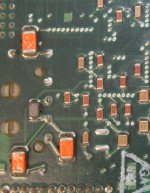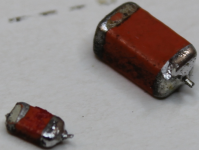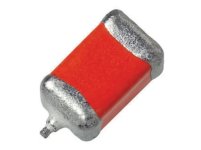spiceminer
Experienced Member
Dear All!
Anybody knows which values (voltage rating / capacity in uF) can be used as a replacement for
these orange blobs that can be found in DEC equipment?
As an example, I have here a RA72 disk drive which needs cap replacement.

On the RA72 the caps have the dimensions 4x6.7mm and 2.2x2.6mm-
thanks a lot
Stephan
Anybody knows which values (voltage rating / capacity in uF) can be used as a replacement for
these orange blobs that can be found in DEC equipment?
As an example, I have here a RA72 disk drive which needs cap replacement.

On the RA72 the caps have the dimensions 4x6.7mm and 2.2x2.6mm-
thanks a lot
Stephan



